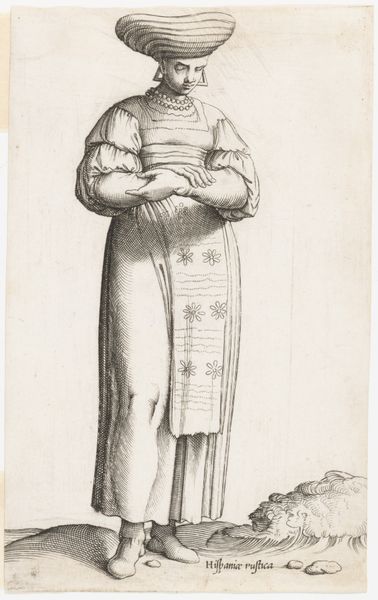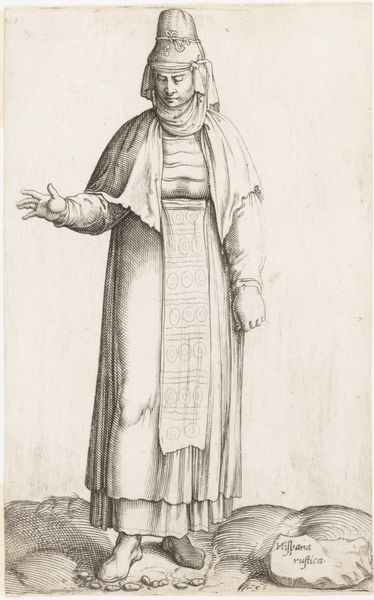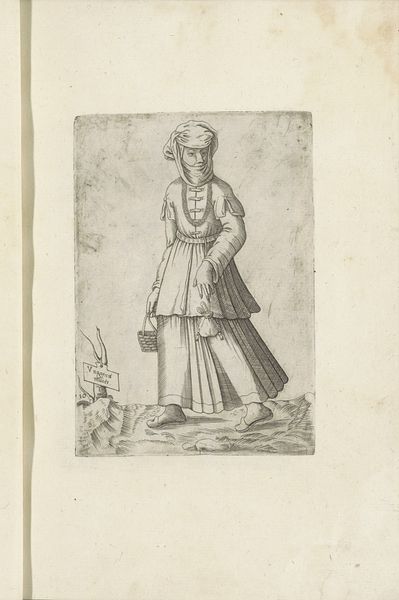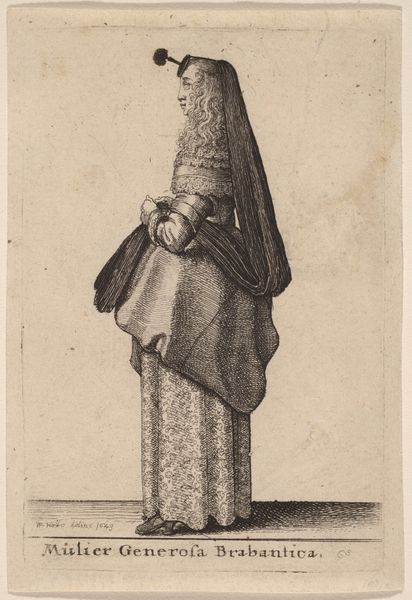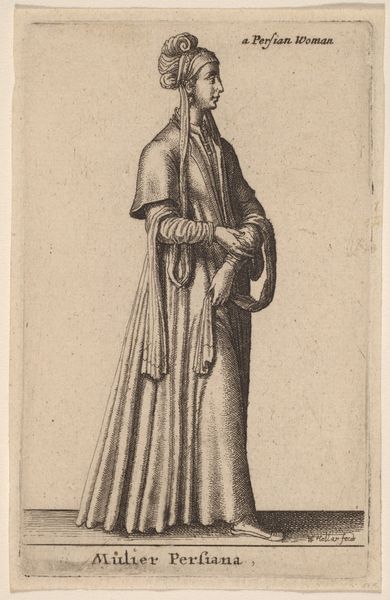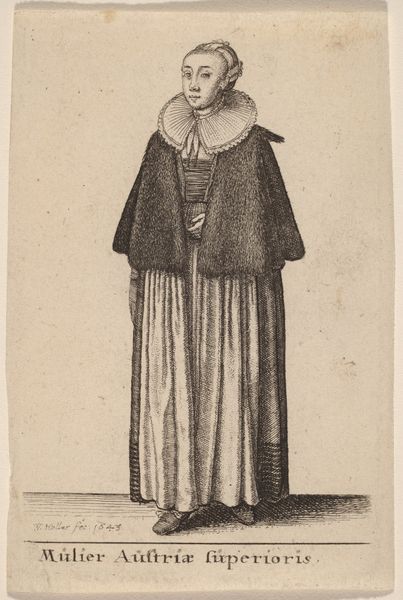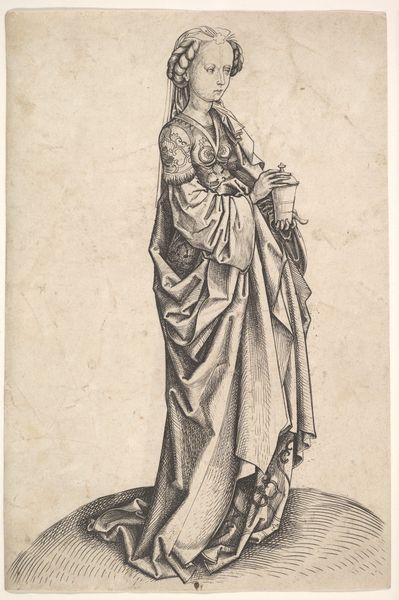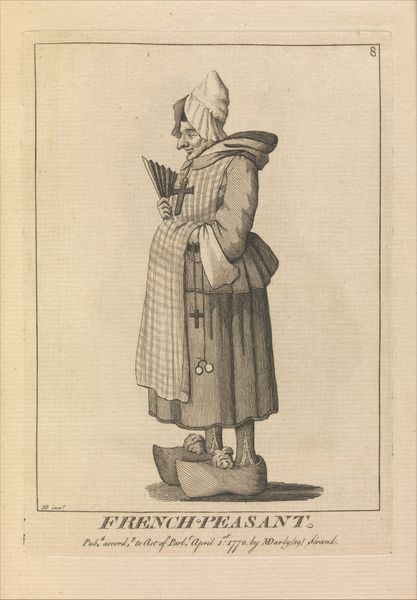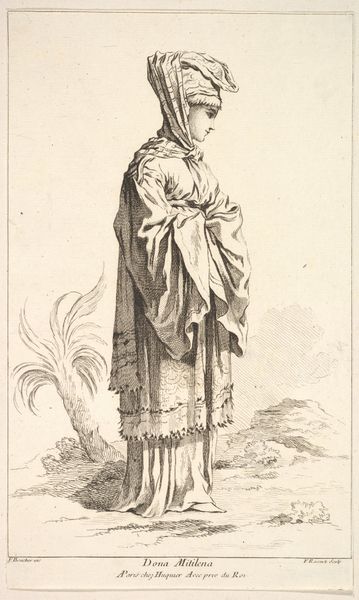
drawing, print, engraving
#
portrait
#
pencil drawn
#
drawing
# print
#
mannerism
#
figuration
#
pencil drawing
#
men
#
portrait drawing
#
history-painting
#
engraving
Dimensions: Sheet (trimmed to plate): 6 1/16 × 4 1/2 in. (15.4 × 11.5 cm)
Copyright: Public Domain
Curator: Welcome. Here we have a Mannerist engraving entitled "Costume Plate: Woman with Hooded Garment" by Enea Vico, dating roughly between 1552 and 1563. It's part of the Metropolitan Museum's collection. Editor: She seems burdened. It's not just the long garment and the head covering, there's something in her posture, the downward gaze, even the desolate little landscape seems to mirror her internal state. Curator: Costume books were quite popular in the 16th century. This piece probably offered models not for fashion as we understand it today, but perhaps represented the dress of specific social groups or regions. The details in the engraving – the lacing on her bodice, the pattern on the hem, were all carefully observed and rendered. Editor: And yet there’s this sense of artifice. It’s as if she’s posing, presenting herself to the viewer rather than just existing within her world. Look at her exposed feet. I can’t imagine doing that for comfort; the small plant is just decoration. Everything in the work suggests something symbolic beyond mere representation. Curator: The conventions of the time were quite different. Displaying knowledge of classical motifs or representing figures in specific poses carried meanings now often lost to us. Mannerism reveled in distortion, in a certain artificial elegance. Editor: True. I wonder what it meant for women during the mid-16th century to be portrayed with an exposed foot? The fact that the placard on the dead shrubbery remains blank begs more questions. But I suppose we can’t really retrieve definitive meaning so far down the line. Maybe, that blankness allows us to consider a question more universal; in what ways can a single identity mean a great deal? Curator: Exactly. Considering this artwork from a social history standpoint gives us clues. Understanding how art and dress communicated within Renaissance society makes it worthwhile. Editor: So, even if we don’t find any absolute answers, exploring "Costume Plate" brings up so many thought-provoking perspectives about art history, fashion, class, symbolism, and of course women’s lives, from hundreds of years ago.
Comments
No comments
Be the first to comment and join the conversation on the ultimate creative platform.

